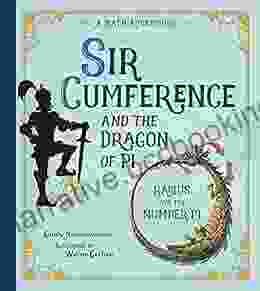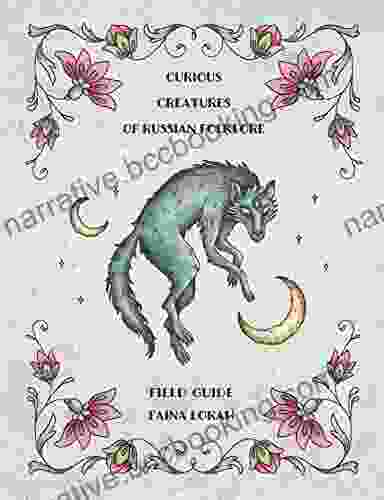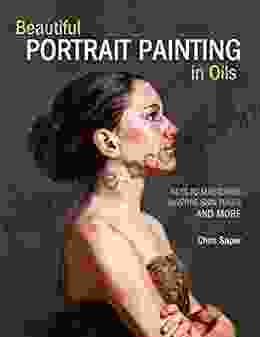Beautiful Portrait Painting In Oils: A Comprehensive Guide to Master the Art

Portrait painting is an ancient and revered art form that allows artists to capture the beauty and essence of their subjects. Oils, with their rich pigments, vibrant colors, and long-lasting durability, are the perfect medium for this purpose. In this comprehensive guide, we will delve into the world of portrait painting in oils, guiding you through every step of the creative process, from choosing materials to capturing stunning details. Whether you are a beginner or an experienced artist, this guide will provide invaluable insights and techniques to elevate your portraiture to new heights.
4.4 out of 5
| Language | : | English |
| File size | : | 108749 KB |
| Text-to-Speech | : | Enabled |
| Screen Reader | : | Supported |
| Enhanced typesetting | : | Enabled |
| Print length | : | 578 pages |
Chapter 1: Materials and Techniques
Choosing the Right Materials
The quality of your portrait will depend heavily on the materials you use. Here are some essential considerations when selecting your paints, brushes, and other supplies:
- Paints: Opt for high-quality oil paints with a wide range of colors. Consider both opaque and transparent paints to achieve various effects.
- Brushes: Choose a variety of natural hair brushes, such as sable, hog, or goat, with different shapes and sizes. Natural hair brushes hold paint well and create smooth, even strokes.
- Canvas: Select a canvas that is properly stretched and primed. Linen or cotton canvases are ideal for oil painting.
- Palette: Invest in a large palette to mix your colors conveniently. A wooden or glass palette with a non-porous surface is recommended.
- Mediums: Use mediums to thin your paints or create specific effects. Linseed oil is a traditional medium for oils, but others like turpentine or varnish can also be explored.
Brush Techniques
Mastering brush techniques is crucial for creating realistic and expressive portraits. Here are some fundamental brushstrokes to practice:
- Flat Brush: Used for blocking in large areas of color or creating sharp, straight edges.
- Round Brush: Ideal for creating details, blending, and adding texture.
- Filbert Brush: A versatile brush that combines the flat and round shapes, suitable for both detail work and broader strokes.
- Drybrush: A technique where a brush with minimal paint is dragged across the surface to create subtle texture or highlights.
- Stippling: Using the tip of a small brush to create small dots, which can build up to form textures or shading.
Chapter 2: Composition and Drawing
Composition Principles
A well-composed portrait captivates the viewer's attention and guides their eye through the painting. Consider the following principles:
- Rule of Thirds: Divide the canvas into thirds horizontally and vertically. Place important elements along these lines or at their intersections.
- Leading Lines: Use lines within the painting to draw the viewer's eye towards the focal point.
- Balance: Distribute elements evenly across the canvas to create a sense of harmony and stability.
- Depth: Create the illusion of depth by using overlapping objects, perspective, and shading.
- Negative Space: Use the empty areas around the subject to enhance the overall composition.
Drawing the Portrait
Before applying paint, it is crucial to create an accurate drawing. This will serve as the foundation for the portrait. Here are some tips for drawing in oils:
- Start with a Light Sketch: Use charcoal or a soft pencil to sketch out the basic proportions and features of the subject.
- Define Shapes: Block in the major shapes of the face, eyes, nose, and mouth.
- Add Details: Gradually add details such as hair, wrinkles, and shadows.
- Refine the Drawing: Step back and observe the drawing from a distance to check for accuracy and make necessary adjustments.
Chapter 3: Color and Light
Color Theory
Understanding color theory is fundamental to creating realistic and harmonious portraits. Consider the following principles:
- Color Wheel: A circular arrangement of colors that shows their relationships and harmonies.
- Primary Colors: Red, blue, and yellow are the basic colors that cannot be created by mixing other colors.
- Secondary Colors: Orange, green, and purple are created by mixing two primary colors.
- Tertiary Colors: Created by mixing a primary and a secondary color.
- Warm and Cool Colors: Warm colors (reds, oranges, yellows) advance and create a sense of depth, while cool colors (blues, greens, purples) recede and add a sense of distance.
Light and Shadow
Light and shadow play a crucial role in defining form and creating depth in a portrait. Here's how to handle them:
- Light Source: Determine the direction of light and how it falls on the subject.
- Highlights: The lightest areas on the subject where the light directly hits.
- Midtones: Areas with moderate lighting that transition between highlights and shadows.
- Shadows: Areas with reduced lighting, which can range from soft to dark.
- Cast Shadows: Shadows cast by objects onto other surfaces.
Chapter 4: Painting the Portrait
Step 1: Blocking In
Start by blocking in the major color areas using a large brush. Apply a thin layer of paint and focus on establishing the overall shape and proportions.
Step 2: Refining Features
Gradually refine the features by adding more detail. Use smaller brushes to define the eyes, nose, mouth, and hair. Pay attention to the subtle variations in tone and texture.
Step 3: Building Shadows and Highlights
Begin building shadows and highlights to create a sense of form. Apply darker paint in the shadow areas and lighter paint in the highlighted areas. Use smooth transitions to blend the tones.
Step 4: Glazing and Detailing
Glazing involves applying thin layers of transparent paint over dried layers. It can enhance depth, texture, and coloration. Add final details such as hair strands, wrinkles, and reflections to bring the portrait to life.
Step 5: Finishing Touches
Once the portrait is complete, allow it to dry thoroughly. Apply a layer of varnish to protect the painting and enhance the colors.
Chapter 5: Troubleshooting and Advanced Techniques
Common Problems and Solutions
Address common challenges that may arise during the painting process:
- Muddy Colors: Mixing too many colors or using dirty brushes can result in muddy colors. Clean your brushes regularly and use a limited palette.
- Uneven Drying: Applying paint too thickly can lead to uneven drying. Use thin layers and allow each layer to dry completely before applying the next.
- Cracking: Applying paint too thickly or using too much medium
4.4 out of 5
| Language | : | English |
| File size | : | 108749 KB |
| Text-to-Speech | : | Enabled |
| Screen Reader | : | Supported |
| Enhanced typesetting | : | Enabled |
| Print length | : | 578 pages |
Do you want to contribute by writing guest posts on this blog?
Please contact us and send us a resume of previous articles that you have written.
 Book
Book Novel
Novel Page
Page Chapter
Chapter Text
Text Story
Story Genre
Genre Reader
Reader Library
Library Paperback
Paperback E-book
E-book Magazine
Magazine Newspaper
Newspaper Paragraph
Paragraph Sentence
Sentence Bookmark
Bookmark Shelf
Shelf Glossary
Glossary Bibliography
Bibliography Foreword
Foreword Preface
Preface Synopsis
Synopsis Annotation
Annotation Footnote
Footnote Manuscript
Manuscript Scroll
Scroll Codex
Codex Tome
Tome Bestseller
Bestseller Classics
Classics Library card
Library card Narrative
Narrative Biography
Biography Autobiography
Autobiography Memoir
Memoir Reference
Reference Encyclopedia
Encyclopedia Ceidrik Heward
Ceidrik Heward Charlotte Klaar Phd
Charlotte Klaar Phd Chris Townsend
Chris Townsend Charles W Calomiris
Charles W Calomiris Christie Watson
Christie Watson Chris Colfer
Chris Colfer Charlie Nardozzi
Charlie Nardozzi Christopher Gehrz
Christopher Gehrz Christine Adamec
Christine Adamec Cea Sunrise Person
Cea Sunrise Person Chris Bernhardt
Chris Bernhardt Charbak Dipta
Charbak Dipta Catherine Slaney
Catherine Slaney Chris Cheng
Chris Cheng Chris Kennedy
Chris Kennedy Cathy Lamb
Cathy Lamb Christopher Skaife
Christopher Skaife Christine Mander
Christine Mander Chanice Lee
Chanice Lee Christopher Rice
Christopher Rice
Light bulbAdvertise smarter! Our strategic ad space ensures maximum exposure. Reserve your spot today!

 Eddie PowellOur Altered Life: An Exploration of Identity, Relationships, and Resilience...
Eddie PowellOur Altered Life: An Exploration of Identity, Relationships, and Resilience...
 Nathaniel HawthorneTales Of Selkies Giants And The Sea: A Literary Odyssey into the Heart of...
Nathaniel HawthorneTales Of Selkies Giants And The Sea: A Literary Odyssey into the Heart of...
 Nathan ReedWhere Have All the Birdies Gone? A Literary Enigma that Unravels the Silent...
Nathan ReedWhere Have All the Birdies Gone? A Literary Enigma that Unravels the Silent...
 William FaulknerUnveiling the Enigmatic Epoch: A Comprehensive Journey through The History of...
William FaulknerUnveiling the Enigmatic Epoch: A Comprehensive Journey through The History of... Marcus BellFollow ·9.3k
Marcus BellFollow ·9.3k Ian PowellFollow ·8.9k
Ian PowellFollow ·8.9k Ronald SimmonsFollow ·7.4k
Ronald SimmonsFollow ·7.4k Samuel WardFollow ·19.5k
Samuel WardFollow ·19.5k Reginald CoxFollow ·15.2k
Reginald CoxFollow ·15.2k Fernando BellFollow ·13.9k
Fernando BellFollow ·13.9k Ivan TurgenevFollow ·16.5k
Ivan TurgenevFollow ·16.5k Jules VerneFollow ·10.4k
Jules VerneFollow ·10.4k

 J.R.R. Tolkien
J.R.R. TolkienEscape to the Culinary Paradise: "Truck Stop Deluxe In...
Prepare your palate for an...

 Andres Carter
Andres CarterA Taste of the Unusual: Discover the Enchanting World of...
Prepare to be captivated by "Cindy Supper...

 Nick Turner
Nick TurnerChild Obesity: Introducing the Idea of Healthy Weight
Child obesity is a serious...

 Junot Díaz
Junot DíazGoing Local: Your Ultimate Guide to Swiss Schooling |...
In the heart of Europe, Switzerland boasts a...

 Raymond Parker
Raymond ParkerSir Cumference and the Dragon of Pi: A Mathematical Fable
In the enchanting realm of...

 Thomas Powell
Thomas PowellUnveiling the Enchanting Realm of Curious Creatures from...
Russian folklore is a rich tapestry of...
4.4 out of 5
| Language | : | English |
| File size | : | 108749 KB |
| Text-to-Speech | : | Enabled |
| Screen Reader | : | Supported |
| Enhanced typesetting | : | Enabled |
| Print length | : | 578 pages |




